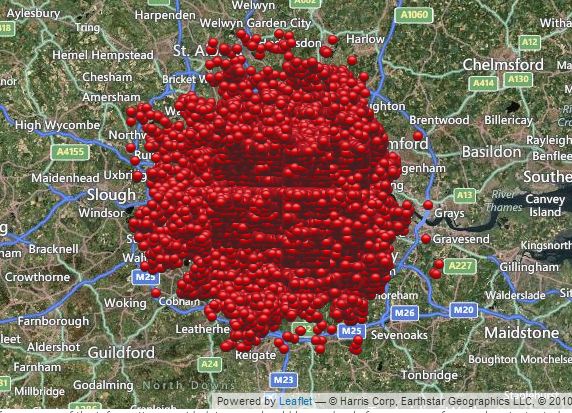 NEWS
NEWS
 NEWS
NEWS
 NEWS
NEWS
![]() During World War Two, London was subjected to what’s commonly referred to as ‘The Blitz’, one of the longest and deadliest campaigns of terror ever unleashed on a human population.
During World War Two, London was subjected to what’s commonly referred to as ‘The Blitz’, one of the longest and deadliest campaigns of terror ever unleashed on a human population.
For a period of eight months, from September 7, 1940 until May 11, 1941, Germany’s Luftwaffe dropped over a million incendiaries and 50,000 high-explosive bombs on the British capital, killing more than 20,000 people in a failed effort to force the country to surrender.
The Blitz may have taken place more than 70 years ago, but its legacy lives on in the hearts and minds of the British people. Now, for the first time, we can actually see the enormous scale of the devastation wrought by Nazi bombing thanks to a fascinating new interactive map created by the National Archives, the University of Portsmouth and the Joint Information Systems Committee.
Bombsight illustrates the scale of The Blitz like never before, showing the locations of each bomb that fell on the city during those eight fearful months.
Geographer Dr Kate Jones of Portsmouth University, who helped create the map, said even she was shocked by the true scale of the bombing:
“When you look at these maps and see the proliferation of bombs dropped on the capital it does illustrate the meaning of the word Blitz, which comes from German, meaning lightning. It seems astonishing that London survived the onslaught.”
Jones goes on to explain that her team of researchers took over a year to compile the map, using archived data from the UK’s National Archives, plus maps from the London WWII bomb census that were created between October 1940 and June 1941. In addition, they used more modern resources in the form of geo-located photos borrowed from the Imperial War Museum. Finally, they also relied on the memories of countless witnesses stored by the BBC’s WW2 People’s War Archive.
The map shows a London that was absolutely peppered with bombs over the eight month period, with red symbols representing the bombs scattered through what seems like every other street. Users can manipulate the map, zooming in and out of specifc streets, clicking on individual bombs to see what type fell where.
Another feature of Bombsight is the ability to view collections of photos from the Imperial war Museum, and read stories from survivors affected by the bombing.
As well as the website, there will soon be an Android app available, which will come with the additional bonus of an augmented reality view that lets people in London point their smartphone at a specific London street, and using the phone’s GPS and camera, see how many and what type of bombs fell nearby.
THANK YOU